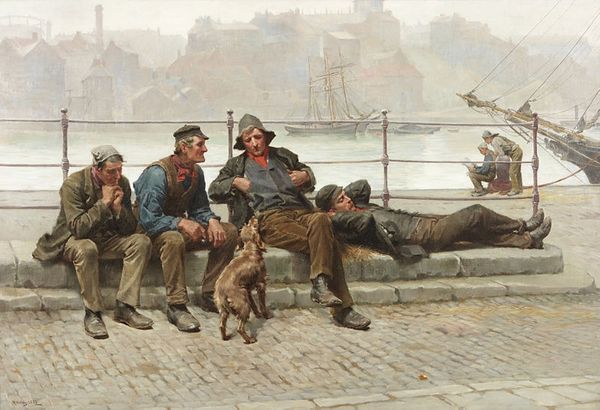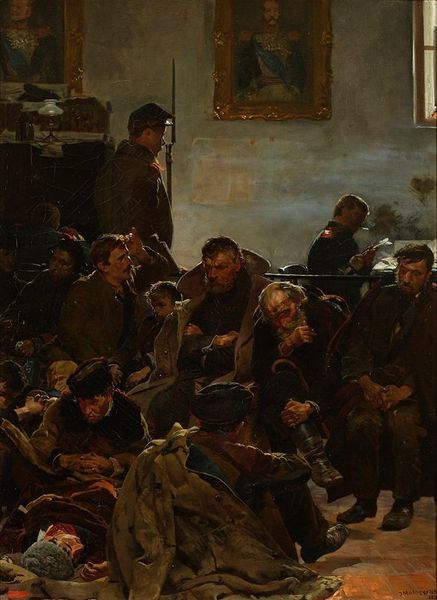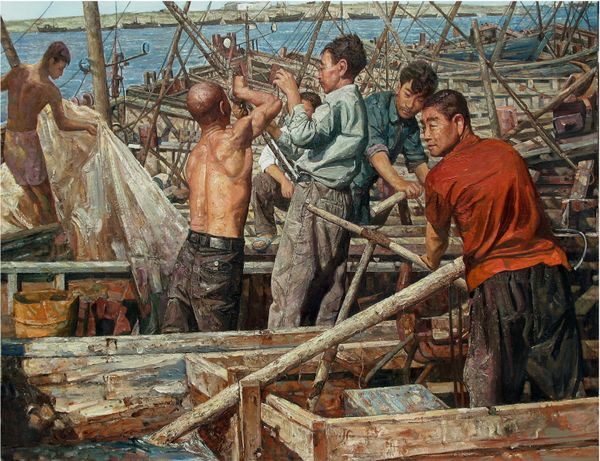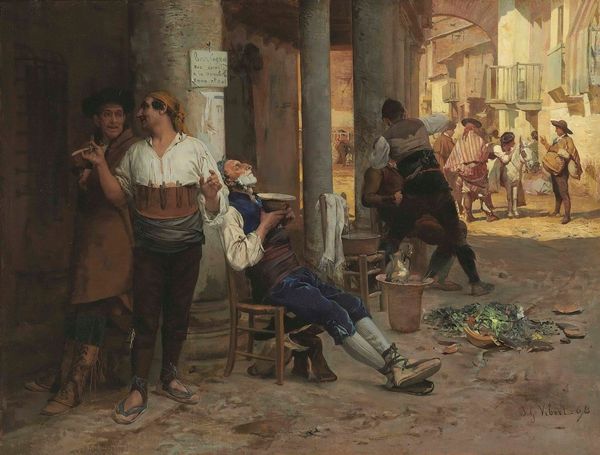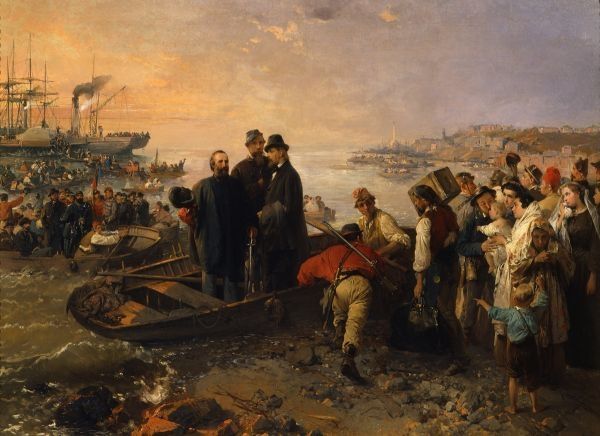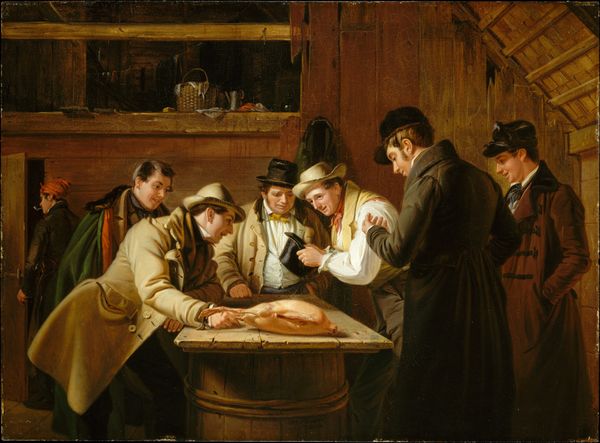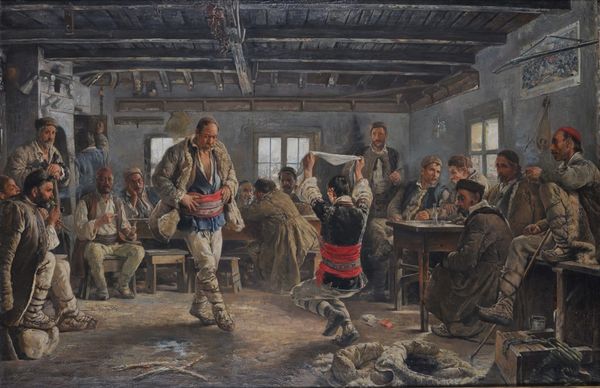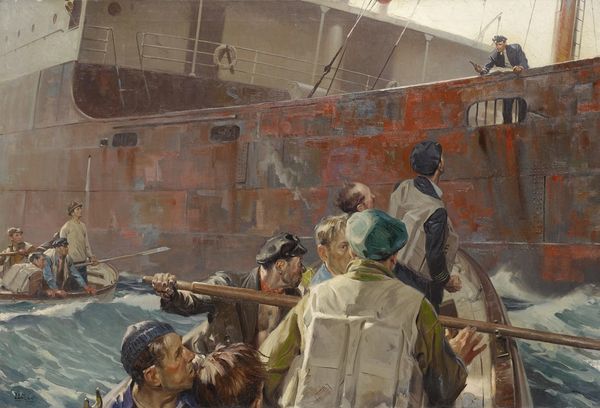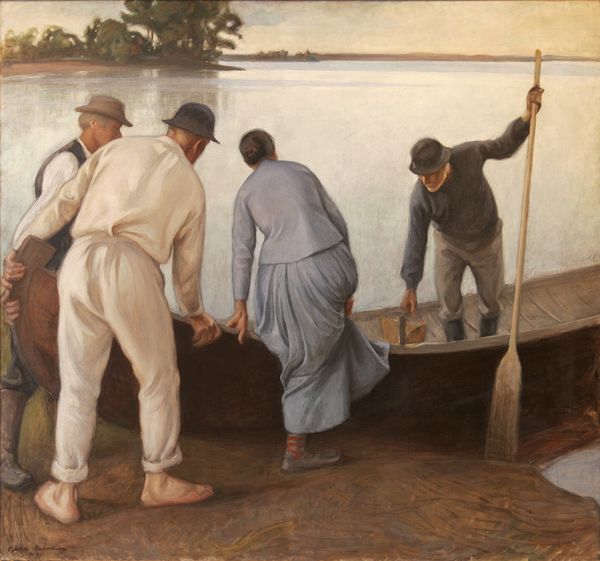
oil-paint
#
portrait
#
figurative
#
oil-paint
#
landscape
#
genre-painting
#
modernism
#
realism
Copyright: Public Domain: Artvee
Editor: Here we have John George Brown's "The Longshoremen’s Noon," painted in 1879. It's an oil painting showing a group of men on a break, likely dockworkers, with ships in the background. The textures and tones create a strong sense of realism. What compositional elements stand out to you? Curator: Primarily, the carefully arranged figures forming a pyramid shape against the more loosely rendered background space commands attention. Note Brown’s astute juxtaposition of the gritty materiality of work – the coarse textures of clothing and the palpable weight of those cotton bales – with the gentle light that bathes the scene, particularly softening the industrial background, it's carefully considered to subtly structure how we visually move through this space. The composition uses a horizontal arrangement of figures at different states of activity versus passivity in that hierarchy. What sort of tensions do you detect, as part of a dialectic in the painting? Editor: It's interesting how the relaxed poses of some men contrast with the implied labor. The colors are also subdued, emphasizing browns and grays, which reinforces the theme of labor. How does the contrast of the people in this image versus its background serve Brown’s painting practice, given this period? Curator: Precisely. The somber tones reflect, as you noted, the realities of working-class life, yes? And those calculated highlights strategically draw the eye. If we look more specifically at how the distribution of weight in the various elements of painting influence its tone and theme, and given Brown's commitment to objective representations, consider the degree to which the formal elements serve the painting as a cohesive image that might carry various significations. Editor: So, the arrangement of figures, combined with color and texture, points to a specific theme and tone of life in the later 19th Century. I appreciate how you point out the distribution of color and texture to the thematic considerations. Thanks. Curator: Yes, thinking about form, structure and medium. It always informs a deeper reading of art’s broader relevance to human history, wouldn't you agree?
Comments
No comments
Be the first to comment and join the conversation on the ultimate creative platform.
